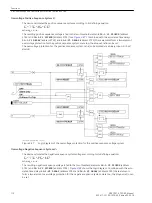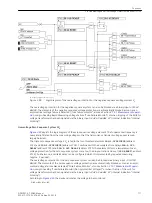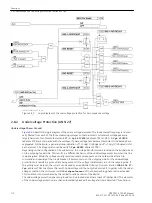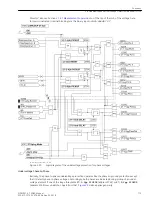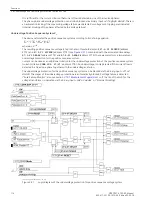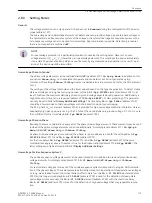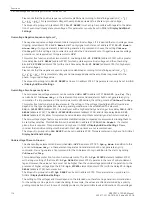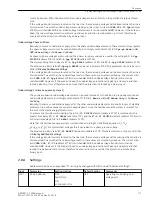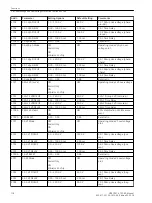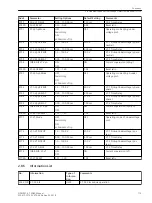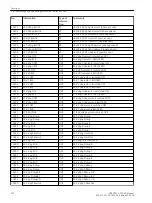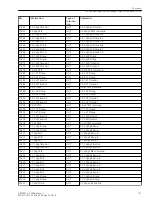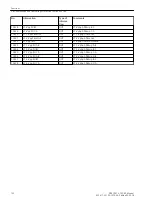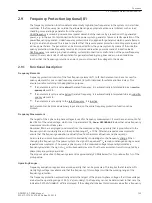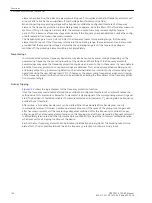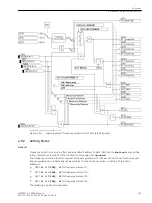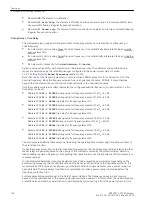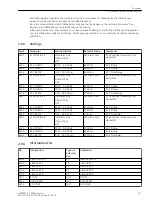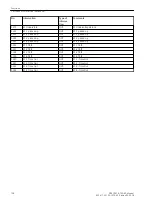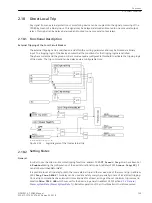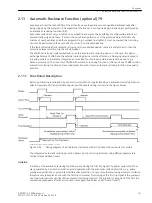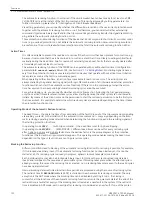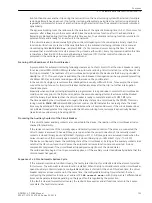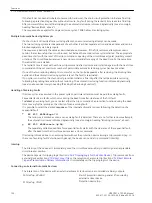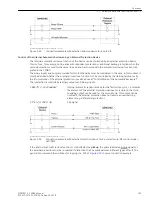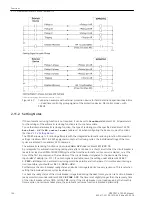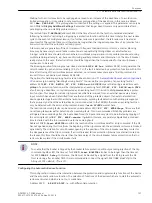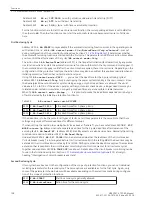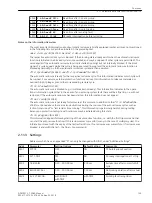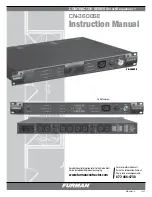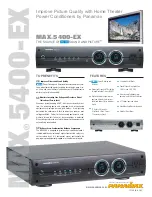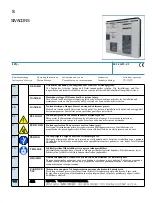
element has picked up, the picked up element will drop out. This implies also that all frequency elements will
drop out after a line has been switched off (with voltage transformers on line side).
When connecting a measuring voltage with a frequency outside the configured threshold of a frequency
element, the frequency protection is immediately ready to operate. Since the filters of the frequency measure-
ment must first go through a transient state, the command output time may increase slightly (approx. 1
period). This is because a frequency stage picks up only if the frequency has been detected outside the config-
ured threshold in five consecutive measurements.
The frequency range is from 25 Hz to 70 Hz. If the frequency leaves this operating range, the frequency
elements will drop out. If the frequency returns into the operating range, the measurement can be resumed
provided that the measuring voltage is also inside the operating range. But if the measuring voltage is
switched off, the picked up element will drop out immediately.
Power Swings
In interconnected systems, frequency deviations may also be caused by power swings. Depending on the
power swing frequency, the mounting location of the device and the setting of the frequency elements,
power swings may cause the frequency protection to pick up and even to trip. In these cases it is reasonable to
block the frequency protection once power swings are detected. This can be accomplished via binary inputs
and binary outputs (e.g. power swing detection of an external distance protection) or by corresponding logic
operations using the user-defined logic (CFC). If, however, the power swing frequencies are known, tripping
of the frequency protection function can also be avoided by adapting the time delays of the frequency protec-
tion correspondingly.
Pickup / Tripping
shows the logic diagram for the frequency protection function.
Once the frequency was reliably detected to be outside the configured thresholds of an element (above the
setting value for f> elements or below for f< elements), a pickup signal of the corresponding element is gener-
ated. The decision is considered reliable if 5 measurements taken in intervals of
1
/
2
period yield one frequency
outside the set threshold.
After pickup, a time delay per element can be started. When the associated time has elapsed, one trip
command per element is issued. A picked up element drops out if the cause of the pickup is no longer valid
after five measurements or if the measuring voltage was switched off or the frequency is outside the oper-
ating range. When a frequency element drops out, the tripping signal of the corresponding frequency element
is immediately terminated, but the trip command is maintained for at least the minimum command duration
which was set for all tripping functions of the device.
Each of the four frequency elements can be blocked individually by binary inputs. The blocking takes imme-
diate effect. It is also possible to block the entire frequency protection function via binary input.
Functions
2.9 Frequency Protection (optional) 81
124
SIPROTEC 4, 7SD80, Manual
E50417-G1100-C474-A2, Edition 02.2018
Summary of Contents for SIPROTEC 4 7SD80
Page 8: ...8 SIPROTEC 4 7SD80 Manual E50417 G1100 C474 A2 Edition 02 2018 ...
Page 10: ...10 SIPROTEC 4 7SD80 Manual E50417 G1100 C474 A2 Edition 02 2018 ...
Page 18: ...18 SIPROTEC 4 7SD80 Manual E50417 G1100 C474 A2 Edition 02 2018 ...
Page 248: ...248 SIPROTEC 4 7SD80 Manual E50417 G1100 C474 A2 Edition 02 2018 ...
Page 298: ...298 SIPROTEC 4 7SD80 Manual E50417 G1100 C474 A2 Edition 02 2018 ...
Page 312: ...312 SIPROTEC 4 7SD80 Manual E50417 G1100 C474 A2 Edition 02 2018 ...
Page 322: ...322 SIPROTEC 4 7SD80 Manual E50417 G1100 C474 A2 Edition 02 2018 ...
Page 400: ...400 SIPROTEC 4 7SD80 Manual E50417 G1100 C474 A2 Edition 02 2018 ...
Page 402: ...402 SIPROTEC 4 7SD80 Manual E50417 G1100 C474 A2 Edition 02 2018 ...

